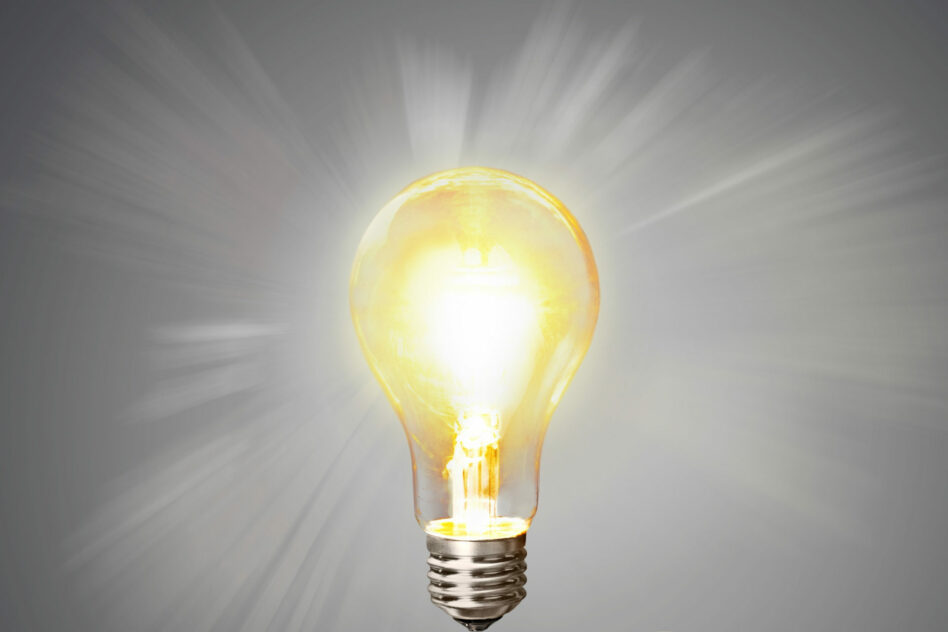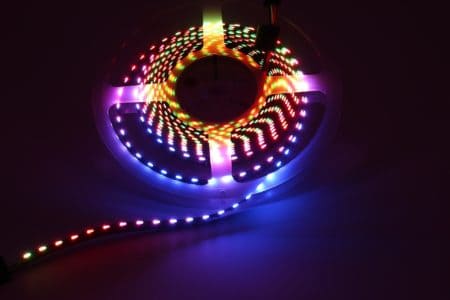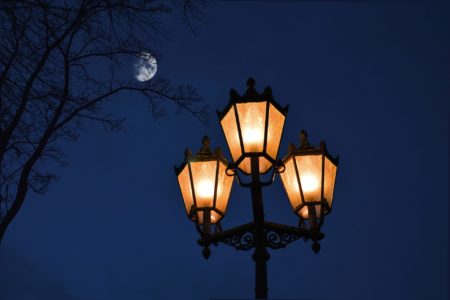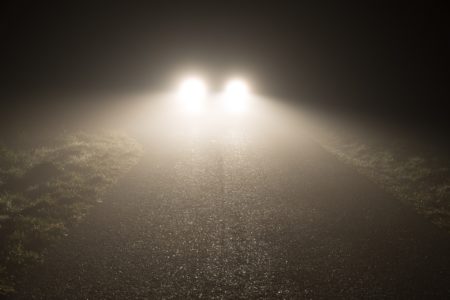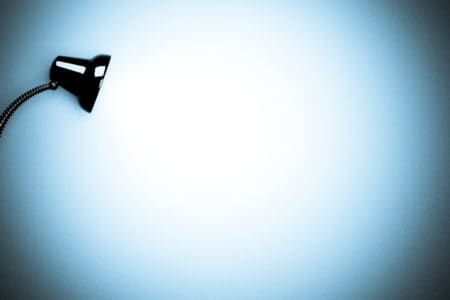When looking for modern lighting technology, LED bulbs have become the most popular choice. Due to their high lumen output there are very bright bulbs available. In this article, we’re going to explore everything you need to know about the brightest light bulbs, including tips on how you can find them on Amazon. Let’s get started.
What Is the Brightest Light Bulb?
We now have a myriad of light bulbs that come in various levels of brightness. However, here are the brightest light bulbs that you can consider:
LED Light Bulbs
LEDs, or Light-Emitting Diodes, are one of the best options on the market. Compared to other types of lighting, LED bulbs are energy efficient. They also have an average lifespan of 25,000 hours.
On top of that, LED light bulbs offer higher lumens for the same wattage.
In fact, good quality LED bulbs can generate up to 110 lumens for the same wattage that incandescent light bulbs output around 14 lumens!
In addition, LED lights use absolute photometry to measure their total output net or lumens. This means that their lumens stay the same no matter what type of light fixture and ballast you use.
In contrast, other lighting products like halogen and fluorescent lights utilize relative photometry. In this case, the total output net can still be reduced to as low as 50 lumens if you use recessed light fixtures.
Now, here are the brightest LED light bulbs that you can find on Amazon:
- Energetic LED Bulbs 150 Watt Equivalent
- LE 100W Equivalent LED Light Bulbs
- 100W LED Corn Light Bulb
- MAXvolador A21 LED Light Bulbs
- KINDEEP 150-200W
CFL Light Bulbs
CFL bulbs are also known as compact fluorescent light bulbs.
These bulbs are more energy-efficient if you compare them to incandescent or halogen lights. However, they’re not as efficient as LED light bulbs.
While the LED’s lifespan is 25,000 hours, fluorescent light bulbs have around 8,000 hours. This means that three CFL light bulbs are equivalent to one LED bulb!
Plus, you’ll have to double the watts of CFL bulbs to achieve the same level of brightness as LED light bulbs.
If you’re curious, here are some of the brightest fluorescent light bulbs online:
- SleekLighting 18 Watt T4 Double Tube
- 26 Watt CFL Light Bulbs
- Sunlite PLD26/E/SP41K/10PK 4100K Cool White Fluorescent
- GoodBulb PLL55/835
- PLL40/850
How to Find the Brightest Light Bulbs on Amazon
The online market for light bulbs is developing pretty fast, so we have a lot of options. As a result, it can be challenging for consumers to pick the best LED and fluorescent lights.
Lucky for you, here’s how you can find the brightest light bulbs on Amazon:
Step One: Go to Amazon’s Bestseller Page
The easiest way to find the brightest light bulbs is by checking the bestseller list. The list will show you several light bulb products alongside their wattages, lumens, and Kelvin measurements.
From there, you can compare the products to narrow down your choices.
Alternatively, you may simply type in the keyword to the search engine. Then, you can sort the results by going to the filter menu.
Next, choose “LED bulbs” or “Fluorescent bulbs.”
Another tip is sorting the light bulbs based on their brightness. For instance, you can navigate to the filter option once more and choose the number of lumens. In addition, you can pick the color temperature.
Step Two: Consider the Lumens of the Light Bulb
When measuring how much light a bulb can emit, you should check for lumens instead of wattage. Wattage is the amount of electricity that the bulbs need to produce light, whereas lumens are the measure of the light intensity that our eyes can see.
Generally, the lumen value of the light bulb is the International System of Units or SI of luminous flux. It’s the measure of the total quantity of visible light that a light source can emit per unit of time.
Usually, LED lights can generate more lumens per wattage compared to other types of light bulbs, like fluorescent and incandescent bulbs. For instance, a 60-watt incandescent bulb has 850 lumens while a 23-watt LED light bulb generates 2500 lumens.
Keep in mind that the higher the number of lumens, the brighter the bulbs will be.
Luckily, you can find more information on a light bulb’s lumens in the product detail section.
Step Three: Choose Bulbs with the Right Color Temperature
Another thing that you should consider is the color of the bulb. Although some light bulbs, like the LEDs and CFLs, put out a wide range of colors, they come in two common colors.
The warm white or the soft white gives off a yellowish hue and a candle-like glow to a room. The other popular color is bright white light or daylight.
As the name implies, the latter has a brighter and whiter color.
Technically, the color on the white light spectrum is called the color temperature. You can measure the color temperature on the Kelvin scale. Generally, the lower the number, the warmer and more yellowish the light appears.
On the other hand, if the Kelvin is higher, the brighter the light is.
Bulbs with bright white colors range from 3,300K to 5,300K. You can choose light bulbs with 6,500K if you want the light bulbs to resemble daylight.
Either way, avoid bulbs with Kelvin scales lower than 3,300K because they have yellow and dimmer lights.
You can also find the Kelvin scale measurement of the bulbs in the description of the lighting product.
What Should You Consider Before Purchasing LED and Fluorescent Light Bulbs?
Although LED and CFLs are our top choices for the brightest light bulbs, they also have their drawbacks.
Here’s what you should consider first before purchasing LEDs and CFLs to minimize any hiccups when you get to use them:
CFLs and LEDs May Not Be Compatible with Dimming Switches
If you want your bright light bulbs to have dimming features as well, you should watch out for non-dimmable light bulbs. As implied, these bulbs aren’t intended for dimmable light fixtures.
Although some manufacturers offer dimmable LEDs, some of them aren’t compatible with traditional dimmer switches. In some cases, you’ll need to replace the switches to make them work.
However, you can always look for compatible LEDs. Just keep in mind that they’ll cost a little more than the non-dimmable ones.
On the other hand, fluorescent lights require dimmer switches that are meant for them. In fact, you might also need to purchase separate ballasts for them.
Unfortunately, most homes with existing dimmers are specifically designed to work for incandescent lights. So, it might not be a good idea to switch to LEDs or CFLs.
Without compatible dimmer switches, the light bulbs burn out quickly. Worse, they might fizzle ahead of their designated lifespan.
LEDs and CFLs Might Not Be Suitable for Enclosed Fixtures
Although fluorescent and LED lights produce less heat than incandescent light bulbs, they’re more sensitive to heat.
For instance, LED lights dissipate heat through a heat sink in the base of the bulb. After that, the heat dissolves into the air. However, if you place it in an airtight housing, the heat can’t dissipate into the air.
In this case, the bulb might overheat to the point of affecting its performance and shortening its lifespan.
Overall, CFLs and LEDs will be fine as long as the fixtures aren’t airtight or enclosed.
